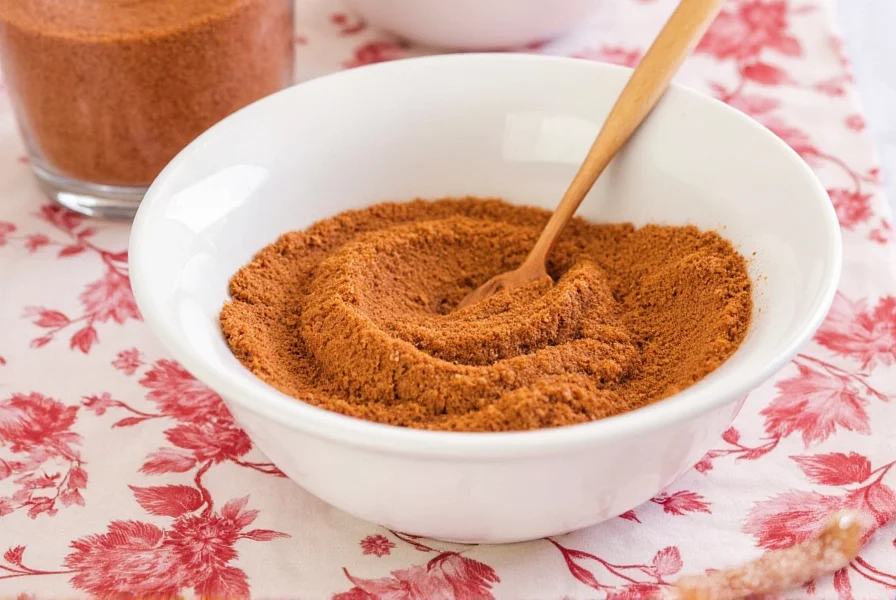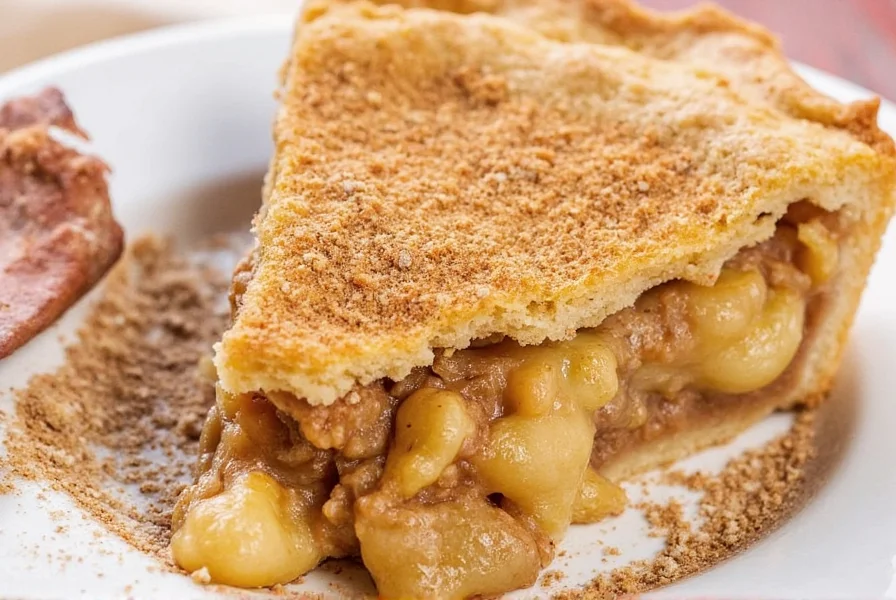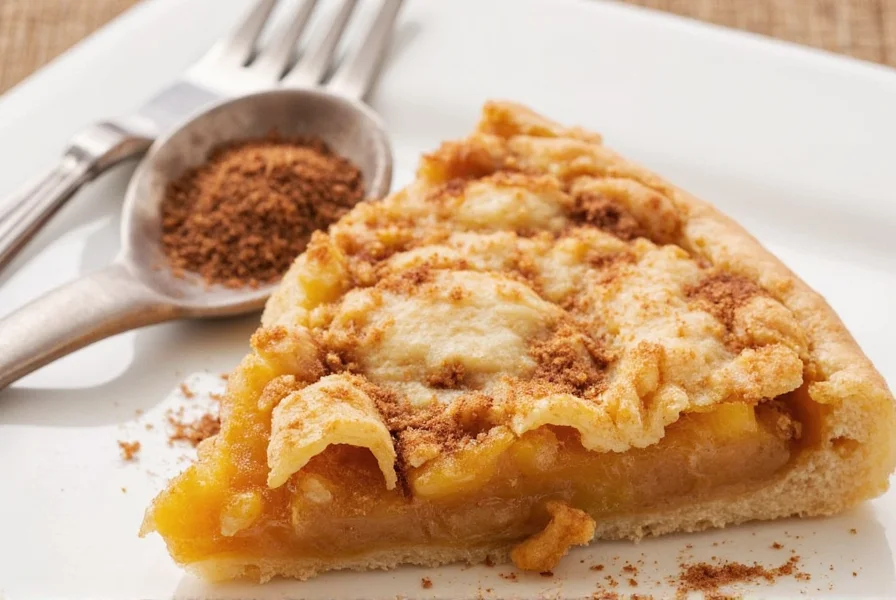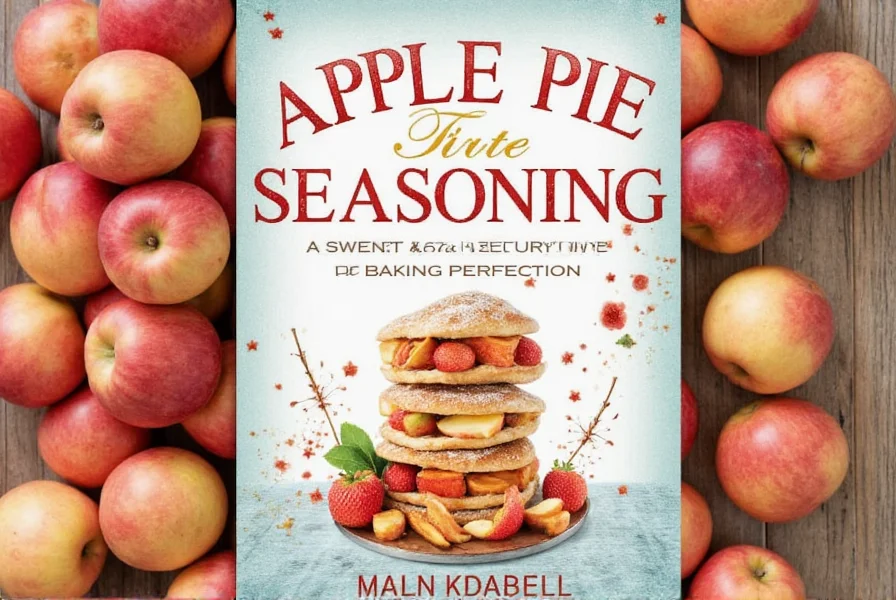Table of Contents
What is Apple Pie Seasoning?
Apple pie seasoning is a blend of warm spices used to flavor apple pies and other baked goods. It typically includes cinnamon, nutmeg, allspice, ginger, and cloves in specific ratios to create a balanced, aromatic flavor. This guide covers everything you need to know about apple pie seasoning, from ingredients to usage tips and brand comparisons.

Ingredients of Apple Pie Seasoning
Apple pie seasoning is a carefully balanced mix of warm spices that work together to create a complex flavor profile. The typical ingredients include:
- Cinnamon
- Nutmeg
- Allspice
- Ginger
- Cloves
Each of these spices adds something unique to the blend. Cinnamon brings sweetness and warmth, nutmeg adds a slightly earthy note, allspice offers a subtle citrusy kick, ginger gives a bit of heat, and cloves add depth and aroma. Together, they form a harmony that complements the tartness of apples and the richness of butter in the crust. According to culinary experts, the standard ratio for apple pie seasoning is approximately 4 parts cinnamon, 1 part nutmeg, 1 part allspice, 0.5 parts ginger, and 0.5 parts cloves.
How to Use Apple Pie Seasoning
Whether you're making a traditional apple pie or experimenting with new recipes, here are some tips to get the most out of your apple pie seasoning:
- Use it in both sweet and savory dishes: While it's commonly used in desserts, apple pie seasoning can also enhance meat dishes, roasted vegetables, and even coffee or tea. For savory applications, use half the amount compared to sweet recipes.
- Adjust the amount based on taste: Some blends are stronger than others, so start with a small amount and add more as needed. For a standard 9-inch apple pie with 6 cups of sliced apples, use 1.5 to 2 teaspoons of seasoning.
- Combine with other spices: Try mixing it with vanilla extract or cardamom for a unique twist on your favorite recipe.
- Store it properly: Keep your seasoning in an airtight container away from heat and moisture to preserve its potency. Ground spices stay fresh for 6-12 months when stored correctly.
- Experiment with homemade blends: If you love cooking, try creating your own version by combining individual spices in your preferred ratios. Toasting whole spices before grinding unlocks deeper flavors.
How to Choose the Best Apple Pie Seasoning
With so many options on the market, choosing the right apple pie seasoning can be overwhelming. Here's how to pick the best one for your needs:
Features to Look For
- Quality of spices: High-quality blends use fresh, whole spices rather than pre-ground powders. Look for brands that specify "100% pure" or "no fillers" on the label.
- Flavor balance: A good seasoning should have a well-rounded flavor without any single spice overpowering the others. Check reviews for consistency in taste.
- Brand reputation: Look for brands known for their quality and consistency in spice blends, such as those recommended by professional bakers.
Advantages and Use Cases
Apple pie seasoning is ideal for:
- Baking pies, tarts, and crisps
- Enhancing the flavor of oatmeal, yogurt, or smoothies
- Adding warmth to soups, stews, and roasted meats
- Infusing coffee, tea, or cocktails with a cozy touch
Target Audience
This seasoning is perfect for:
- Bakers who want to add a homemade touch to their desserts
- Cooking enthusiasts looking to experiment with flavors
- Families who enjoy classic recipes with a personal twist
- Home cooks who want to save time while still achieving restaurant-quality results
Suitable Occasions
Apple pie seasoning is great for:
- Thanksgiving and holiday baking
- Family gatherings and potlucks
- Weekend baking sessions with friends
- Gift-giving during the festive season

Top Apple Pie Seasoning Brands Compared
| Brand | Key Ingredients | Flavor Profile | Best For |
|---|---|---|---|
| McCormick | Cinnamon, nutmeg, ginger, cloves | Warm, balanced, and aromatic | Traditional pies and baked goods |
| Penzeys | Cinnamon, nutmeg, allspice, clove | Rich, deep, and bold | Experienced bakers and spice lovers |
| Walmart (Great Value) | Cinnamon, nutmeg, ginger | Simple and affordable | Everyday baking and casual use |
| Trader Joe's | Cinnamon, nutmeg, allspice, cloves | Delicate yet flavorful | Health-conscious consumers and light flavor preferences |

Frequently Asked Questions
What ingredients are in apple pie seasoning?
Apple pie seasoning is typically a blend of cinnamon, nutmeg, allspice, ginger, and cloves. The exact ratio varies by brand, but these warm spices work together to create that classic apple pie flavor. The perfect blend should have a balanced profile where no single spice overpowers the others. According to culinary experts, the standard ratio is approximately 4 parts cinnamon, 1 part nutmeg, 1 part allspice, 0.5 parts ginger, and 0.5 parts cloves.
How to tell if apple pie seasoning is fresh?
Fresh apple pie seasoning should have a strong, aromatic scent when you open the container. If it's lost its fragrance or the color has faded significantly, it's likely past its prime. Ground spices generally stay potent for 6-12 months when stored properly in an airtight container away from heat and light. Many professional bakers recommend writing the purchase date on the container to track freshness, as stale spices are one of the most overlooked reasons for lackluster flavor in baked goods.
Can I use apple pie seasoning in savory dishes?
Absolutely! While it's commonly associated with desserts, apple pie seasoning can add wonderful depth to savory dishes. Try it in roasted vegetables (especially sweet potatoes and squash), rubbed on pork or chicken before roasting, or even added to soups and stews for a subtle warmth. Just remember to use less than you would in a sweet recipe. Many chefs consider this versatility one of the industry secrets that transforms ordinary weeknight meals into something special.
How much apple pie seasoning should I use in a standard pie recipe?
For a standard 9-inch apple pie with about 6 cups of sliced apples, most recipes call for 1.5 to 2 teaspoons of apple pie seasoning. If you're using a store-bought blend, start with 1.5 teaspoons and adjust to taste. If making your own blend, you might need slightly more since commercial blends are often more concentrated. Many professional bakers recommend adding half the spice to the filling and half to the top crust to create layered flavor that develops perfectly during baking.
What's the difference between apple pie spice and pumpkin pie spice?
While both are warm spice blends, they have distinct differences. Apple pie spice typically contains more cinnamon and ginger with moderate amounts of nutmeg, allspice, and cloves. Pumpkin pie spice usually has a higher ratio of nutmeg and ginger with less cinnamon, and often includes more allspice. Pumpkin pie spice tends to be slightly more pungent, while apple pie spice is generally sweeter and more balanced for fruit-based recipes. Understanding this difference is crucial for achieving authentic flavors in your baked goods.
Can I make my own apple pie seasoning at home?
Yes! Making your own allows you to customize the flavor to your preference. A basic homemade blend is: 4 parts cinnamon, 1 part nutmeg, 1 part allspice, 0.5 parts ginger, and 0.5 parts cloves. Start with 4 teaspoons cinnamon, 1 teaspoon nutmeg, 1 teaspoon allspice, 0.5 teaspoon ginger, and 0.5 teaspoon cloves. Mix well and store in an airtight container. Adjust ratios to suit your taste. Many expert bakers swear by toasting whole spices before grinding them, which unlocks deeper flavors that can't be matched by pre-ground blends.
Why does my apple pie filling become watery even when using apple pie seasoning?
Apple pie seasoning itself doesn't affect the texture of your pie filling - that's more about the apples you use and how you prepare them. Tart, firm apples like Granny Smith hold their shape better. To prevent a watery pie, try tossing your sliced apples with 1-2 tablespoons of cornstarch or tapioca flour before adding the seasoning and sugar. Letting the pie rest for at least 2 hours after baking also helps the filling set. Many professional bakers add a small amount of apple cider vinegar to their filling, which helps break down pectin and creates the perfect texture.
Conclusion
Apple pie seasoning is more than just a blend of spices—it's a gateway to creating delicious, comforting dishes that bring people together. Whether you're using it in a classic apple pie, a cozy mug of spiced cider, or a creative new recipe, the right seasoning can make all the difference. With the right knowledge and a few practical tips, you'll be able to harness the full potential of this beloved spice blend.
Remember, the key to great baking lies not only in the ingredients but also in the care and creativity you put into each step. So grab your favorite apple pie seasoning, roll up your sleeves, and let the magic begin!











 浙公网安备
33010002000092号
浙公网安备
33010002000092号 浙B2-20120091-4
浙B2-20120091-4